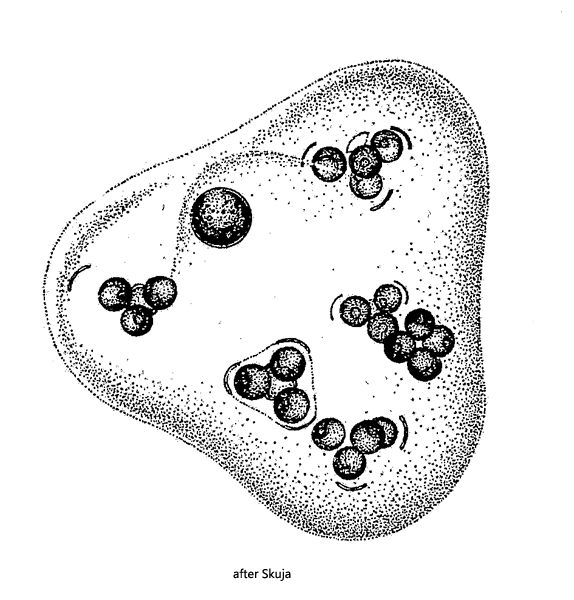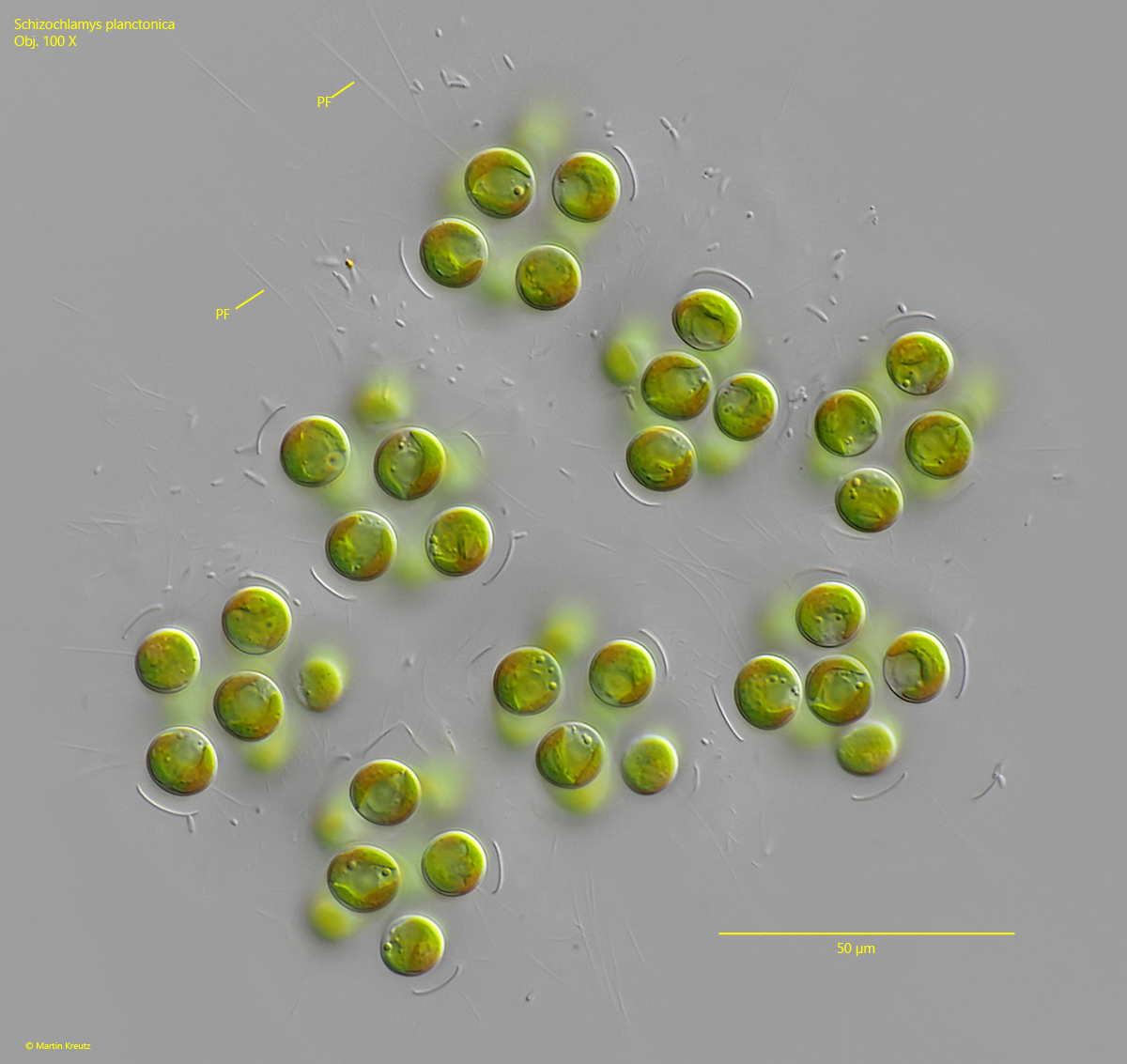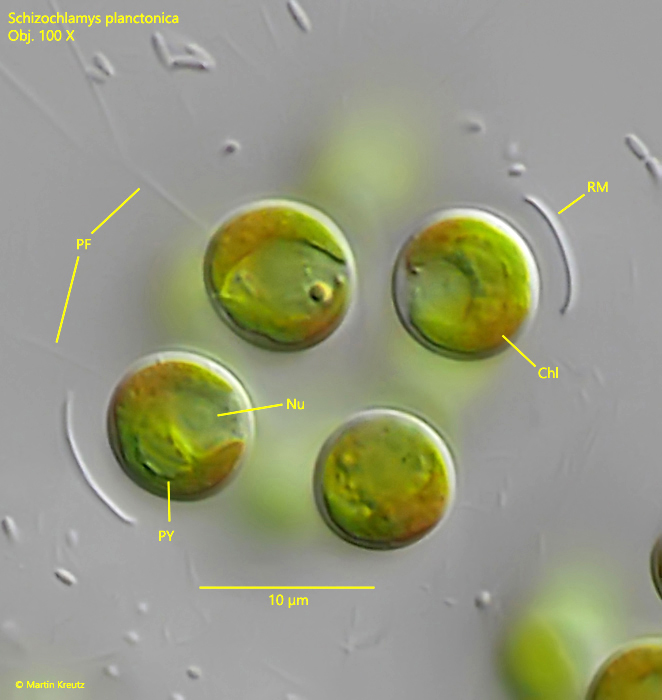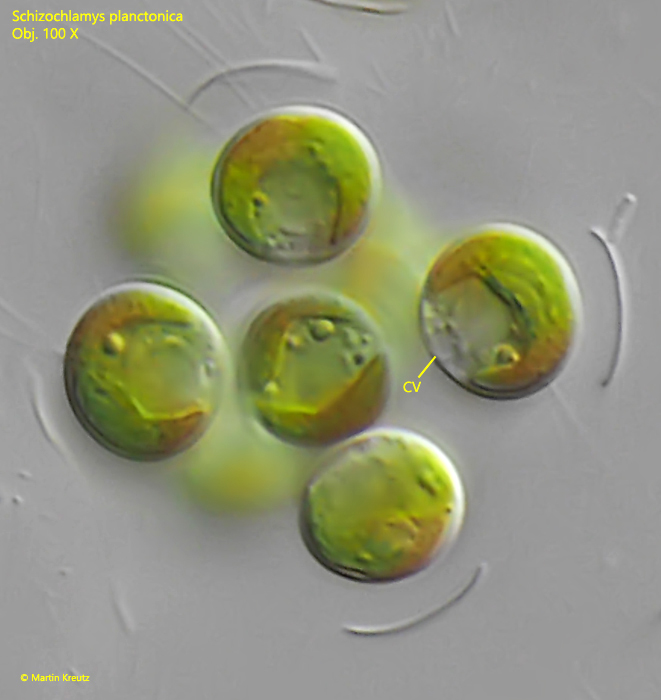Schizochlamys planctonica
(Skuja, 1956)
Most likely ID: n.a.
Synonym: n. a.
Sampling location: Pond of disposal plants Constance
Phylogenetic tree: Schizochlamys planctonica
Diagnosis:
- colonies 50–150 µm in diameter, embedded in structureless mucilaginous envelope
- cells round, smooth, 3–8 µm in diameter
- several pseudo-flagella emerging from cells
- cells in tetrahedral aggregates of 4 cells each
- fragments of mother cells cup shaped around the tetrahedral groups
- about 20–100 cells per colony
- single chloroplast, parietal
- one pyrenoid, often covered with starch grains
- nucleus central

In September 2022 I found very many colonies of the tetrasporal alga Schizochlamys planctonica in plankton samples from the pond of the waste disposal company of Constance. At high magnification, the cap-shaped remnants of the former mother cell surrounding the tetrahedral groups of 4 daughter cells can be seen (s figs. 1 and 2). I could also see the radiating pseudo-flagella emerging from the cells (s. figs. 1 and 2). They are a typical feature of the genus Schizochlamys. Skuja, who described this alga for the first time, does not mention these pseudo-flagella, which is why later authors doubted the affiliation to Schizochlamys. However, in my population I could clearly prove them (s. figs. 1 and 2). The single cells had a diameter of 7–9 µm and were thus at the upper end of the size range given by Skuja. However, this may be due to the highly eutrophic habitat. As described by Skuja, I could detect one chloroplast and one pyrenoid per cell. Tetrasporal algae usually possess contractile vacuoles. None are mentioned by Skuja. However, in my population I could detect contractile vacuoles in the cells (s. fig. 3), although they are hard to see. Skuja justifies the status of Schizochlamys planctonica as a species distinct from Schizochlamys gelatinosa with the much smaller colony size of Schizochlamys planctonica and the softer, structureless gelatinous envelope. In addition, in my opinion, the planktonic lifestyle is characteristic of Schizochlamys planctonica, while Schizochlamys gelatinosa is usually found in marshy, acidic and nutrient-poor waters.

Fig. 1: Schizochlamys planctonica. A slightly squashed colony of 64 cells. Note the fine filaments of the pseudo-flagella (PF). Obj. 100 X.

Fig. 1: Schizochlamys planctonica. D = 7–9 µm. A group of 4 cells in detail. Chl = chloroplast, Nu = nucleus, PF = pseudo-flagella, PY = pyrenoid covered with starch grains, RM = remnant of mother cell wall. Obj. 100 X.

Fig. 1: Schizochlamys planctonica. D = 7–9 µm. A second group of cells. In one of these cells a contractile vacuole (CV) is visible. Obj. 100 X.